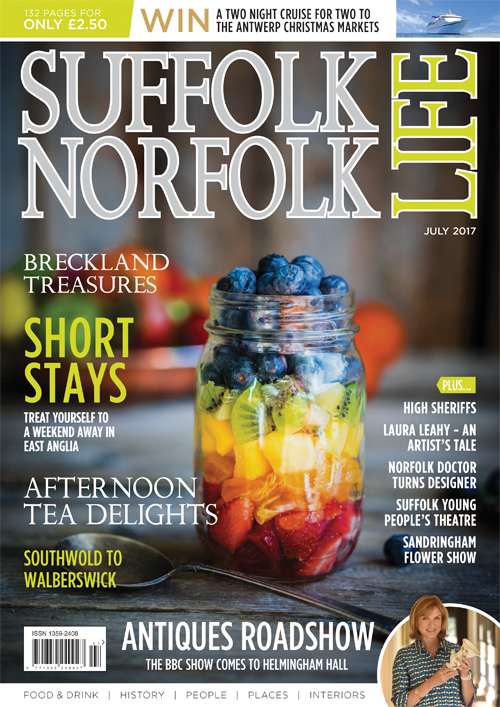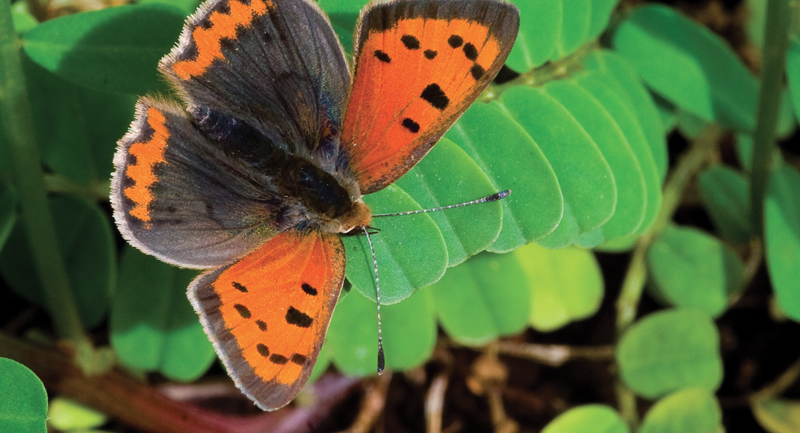- A feature from the July 2017 issue of Suffolk Norfolk Life magazine
 Click to view this issue »
Click to view this issue » - Category
- Nature
Many of our brightest wildlife gems are not nature reserves, says Laurie Forsyth
Phew! For its size, this little plant packs a massive punch, stench-wise. You must kneel before it to appreciate the majesty of its pong – it is prostrate and hard to spot. The awesome smell of rotting fish is perhaps the best way to confirm that you have found stinking goosefoot, one of the rarest plants in the UK. It grows right here, in front of your nose in sandy shingle near the beach at Felixstowe.
It is a plant that probably arrived in Britain with pre-iron Age settlers. It loves enriched soils, and Herbalist Thomas Culpepper in 1653 described it as common on almost every dunghill. They were the golden years for the whiffy little plant, because dunghills with their super-enriched soil were then as common as conservatories and patios are today. The rare plants at your feet are growing in a small sandy area near the Martello Tower at Felixstowe: it is a County Wildlife Site (CWS,) managed by Suffolk Coastal District Council.
Designation of a site as a CWS recognises its high biodiversity, but does not make it a nature reserve, and neither does it bestow statutory protection. There are over 900 County Wildlife Sites in Suffolk and they are all outside the statutory umbrella: many are privately owned. Unsung and off the radar, they are little known, and every one of them is of county or regional importance for its wildlife, and the habitats it contains. It is a simple but effective system which works well for the owners of private County Wildlife Sites, as well as the partnership that offers them advice and support, and for their vital flora and fauna.
From Felixstowe beach, it is just a few long glides and wing beats for a herring gull up the Deben to Melton railway station, near Woodbridge. As the train pulls into the riverside station, commuters travelling to London have a good view of Melton Picnic Site, which is another CWS managed by Suffolk Coastal DC. Small it may be, but it is full of wild flowers, butterflies and birds. April brings nodding cowslips: in summer, southern marsh orchids flourish with ragged robin in a small wet area, and ox-eye daisies in dry grassland toss in the salty breeze off the river.

